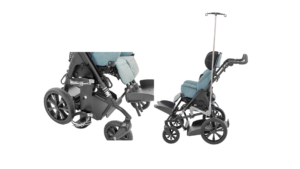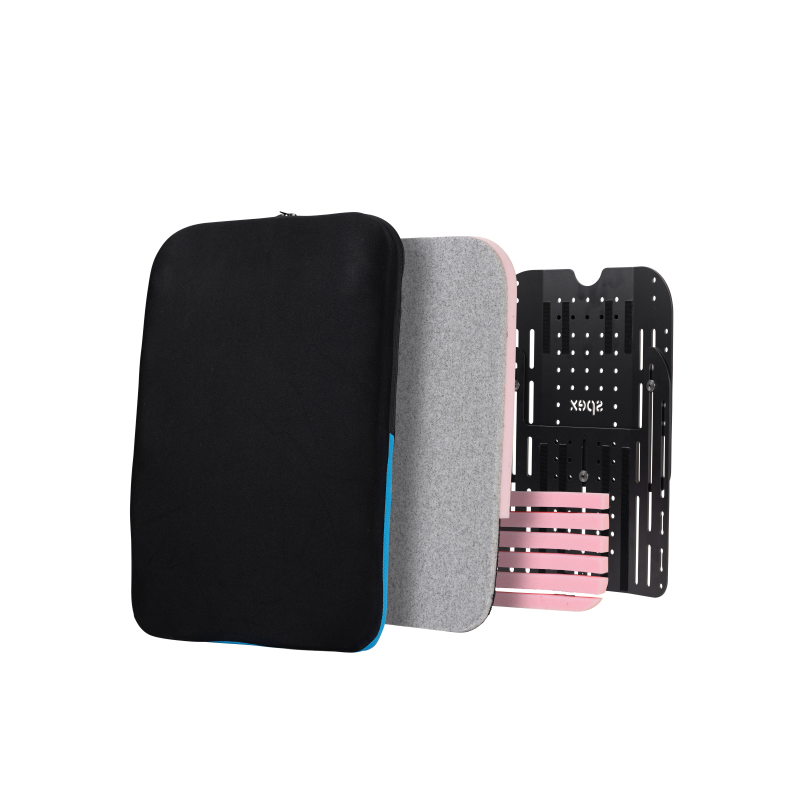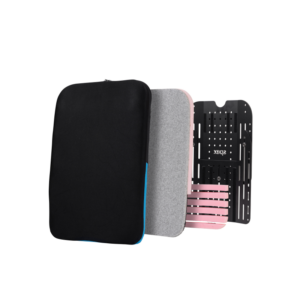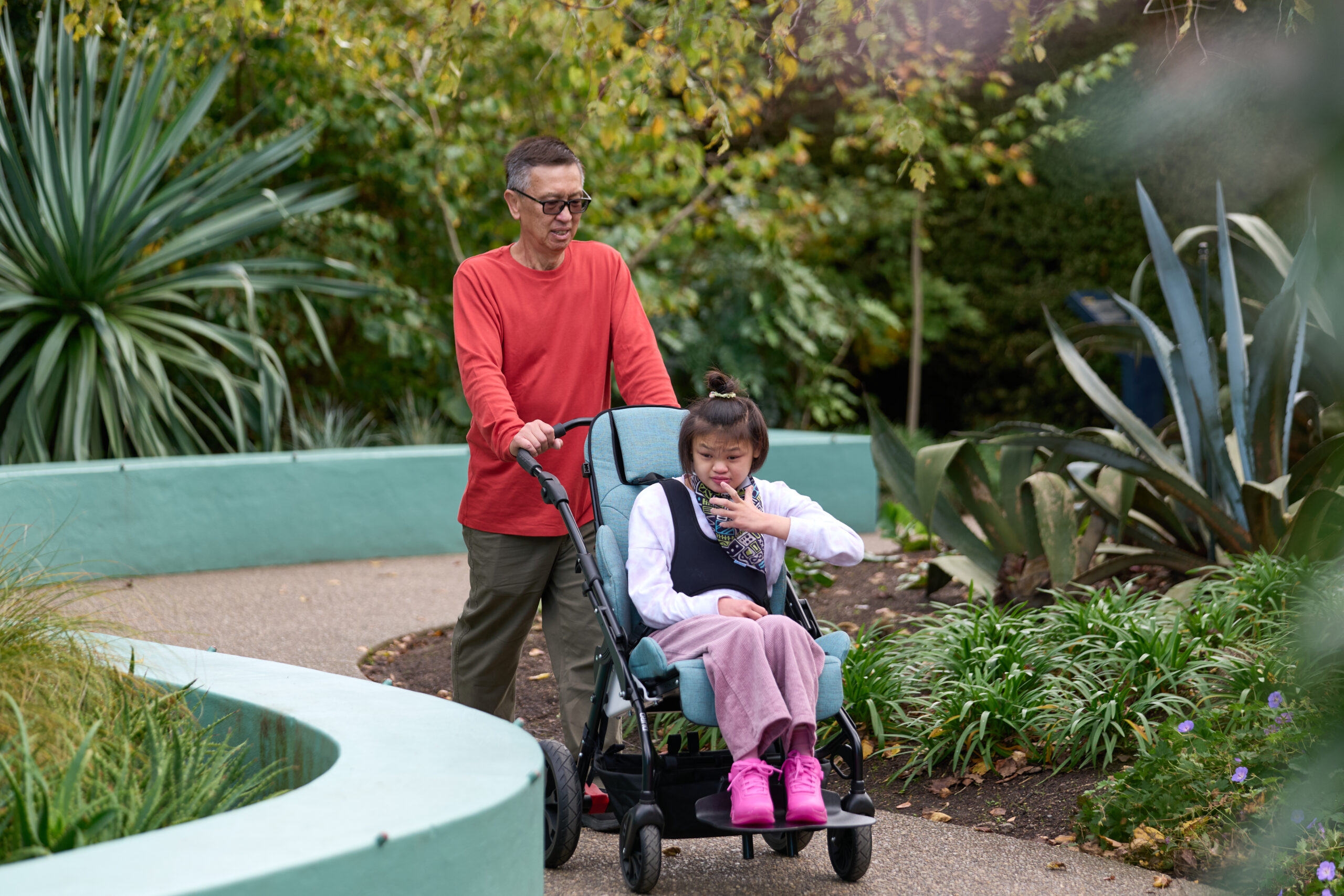Now we have covered key features, benefits and indicators for use of a special purpose stroller in the previous blog post, let’s look at how to find a stroller that suits your child’s needs and lifestyle requirements from the range of options available. Having a clear understanding of the features needed in a special purpose stroller and how it will be used everyday will help with identifying options to trial, meaning you will find a solution sooner!
- What do you want to be able to do with the special purpose stroller? This is the very first question you’ll need to answer when considering options. Will you be using it on flat, indoor surfaces only or on uneven terrain such as gravel? Will you only walk with the child in the special purpose stroller, or is going for a run with your child important to you? There are some changes to the wheel direction or wheel size that can be made depending on what you want to be able to do with the special purpose stroller.
- Size and weight – Consider options that suit your child’s current size, but also accommodate for future growth. All special purpose strollers are designed to be used by users within a specific weight limit set by the manufacturer – it is important your child does not exceed the set weight limit.
- Support and positioning options – There are special purpose strollers that are designed to offer more postural support through accessories that can be added to the stroller for additional head, neck, trunk, chest, pelvic and foot support. Not all special purpose strollers have the same range of additional postural support and positioning options. This is because certain strollers are tailored to children with fatigue management or community mobility safety needs, whereas others are designed for children with higher physical support needs. For example, a child requiring a special purpose stroller for assisting with behaviours of concern within the community may be able to walk and may not need as much postural support compared a child who is fully dependent on a stroller for mobility within the community.

The Duro and Pixi are tailored to help children with fatigue management and community mobility safety needs.
- Accessory Attachments – Consider whether your child has any medical equipment they will need to take with them. Only some special purpose strollers offer additional storage and attachment points for medical equipment, such as oxygen bottles, suction machines and feeding pumps

The Bingo Evo Stroller offers additional storage and attachment points, such as an oxygen bottle holder (left) and IV pole attachment (right)
- Transport and lifting – Make sure you check that you can fold, lift and transport the special purpose stroller as some pack down more compactly than others.
Writing down a list of these points above can help clarify what is required in the stroller, as can discussing you and your child’s specific requirements for a special purpose stroller with your child’s occupational therapist or physiotherapist. Writing down a list can help the occupational therapist or physiotherapist more easily research suitable options to trial with you and your child. You can learn more about how to get the most out of your trial appointment here.





